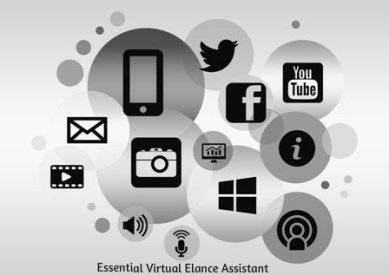There are literally millions of people online in social media and the goal for success is to stand out. You want to be unique, to be remembered, to brand yourself and your business products or services. Therefore, the best way to stand out on social networks is to be authentic – because you’re the only one who can do that.
There are some guidelines though. The following are simple, basic considerations to get you started.
1. Create a Detailed Profile
- Don’t leave out any information for your profiles on social media. You don’t want each profile to be an exact replica, but you do want consistency. It is wise to take advantage of every single bit of space the social network allows in order to create a profile that stands out. The best way to stand out is to always keep your target audience in mind as you create your profile – about what you offer for them. Because yes, even when it’s about you, it’s really about your audience.
2. Invest in a Professional Profile Picture
- It is important to use the same profile picture on all your social networking sites. It doesn’t have to be expensive however it is worth your investment to have a professional profile photo. A good idea is to have a photo-shoot four times a year. You would have images appropriate for each time of year ready to share with others. You can also create memes with the images if you get a variety of shots. Seek out affordable photography students who want to build their portfolio. Getting your hair styled and makeup done professionally is also a good idea. Wearing clothing that you feel confident in will produce an impressive portrait and represent who you are in your business.
3. Share Amazing and Relevant Content
- Online it can be easy to get carried away and go against your niche, but if you stay relevant and only share images and content that is interesting to your target audience you can’t go wrong. Whether you created the content or someone else did, it needs to be something your audience will benefit from and is familiar with before you share it. For example; If you are in the tool business you would probably not want to post a video on how to apply makeup. That’s a pretty drastic comparisn but it helps to follow this guideline.
4. Be Controversial with Caution
- Okay, you don’t want to be offensive with controversy but you can speak up against trends, disagree with gurus and let people know what you really think about things without worrying about the world blowing up. The important thing is to be yourself and be true to who you are, and not to worry too much about what others think. Just be able to back up your ideas with facts. Sometimes controversy can create engagement from others. Social media popularity is most often based on the engagement of your audience.
5. Respond Relevantly
- Engage in online conversations daily. Comment and ask questions for feedback. Don’t use every response as an excuse to talk about your offerings. Instead, make sure that your responses make sense based on the post, comments of others and your experience. Seek to help people instead of promoting your own brand or products.
6. Under Promise and Over Produce
- In everything you do, build a good reputation by always giving more than you get. When people learn from others about you via testimonials, or just comments about you on social media, it’s remembered.
7. Share Your Opinion Strongly
- When you have an opinion about something that you can back up with facts (even if it’s contrary to what others say and do), as long as it fits in with the narrative that you want to accomplish with your audience, go for it. Be authentic and don’t be afraid to show your expertise on a topic in a helpful manner.
8. Be a Good Resource to Others
- You want to always be of service to others in everything you do. Re-tweet and share others social media content, provided it’s not your direct competition. When you’re online, everything you say and do lives forever. Even if you delete it, it’s there someplace for others to see and judge. Keep that in mind and always be a good resource by offering solutions that have helped you.
Standing out online is easy to do if you simply start with being yourself. No one else can do you the way you do you. Don’t try to be fake and don’t try to be something you’re not. Don’t brag and don’t be silent. Add value to your reader. With practice you will find your comfort zone and the content type that your target audience responds to.
Use the tips listed here merely as a starting point to where you, as an entrepreneur or startup small business owner can choose to take advantage of online social media opportunities.
If you have any questions or wish to learn more about how a virtual assistant can help build or manage your social media please contact me.
Content is anything that adds value to the readers life. – Avinash Kaushik, Google









